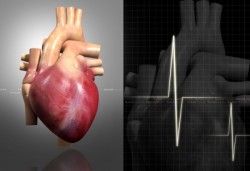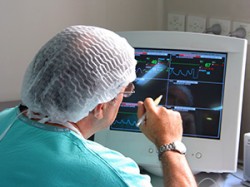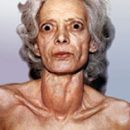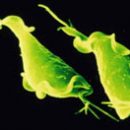Understanding General Information

Shunting is a surgical intervention in which an additional path is created, allowing you to bypass the affected area of any important vessel with special shunts. From the English word «Shunt» can be translated as «branch». Most often shunting of heart vessels. More such operations are possible on tanks and ventricles of the brain (also to restore blood flow) and in the gastrointestinal tract (this is done during overweight). In the presence of a narrowed (clogged) section of a very important blood vessel, a shunt is created, a problem area, thanks to which it is possible to restore blood flow in the artery. In general, the inner wall of healthy vessels is smooth, without any barriers and growths. But during the life of many people develop atherosclerosis, At which atherosclerotic plaques are formed on the walls of the blood vessels (cholesterol layers). They can significantly narrow the clearance of the vessel and cause violation of normal blood flow in tissues and organs, for example, heart. If the plaques are increasing in size, they can completely close blood access to the organ, as a result, necrosis occurs. Heart nutrition is carried out thanks to coronary arteries. And if the lumen is narrowed in them, then they are resorted to an aorticon-artum shunting (abbreviated AKS). This operation is carried out by surgeons during angina, after a heart attack in order to restore normal blood circulation in the heartcard, as well as to prevent heart attack when identifying a significant narrowing of coronary vessels. During AKS, the saving workaround is created «bridge», That is, healthy sections of vessels are connected bypassing the damaged zone. Cuts of healthy veins are taken as a shunt (usually subcutaneous bay of lower legs or hips, internal chest artery, radiation artery of the patient himself). In some cases, they resort to the implantation of plastic prostheses. If the narrowing is observed in several places, then you have to insert several shunts. The first coronary shunting, completed successfully, was held in 1960 in the United States. In Russia, such an operation was carried out in 1964.
The appearance of pain, discomfort in the field of heart location (in stress, loads or at rest) is the signal of the body, showing something with a heart is not in order.
Before surgery
After hospitalization in the hospital, the patient receive written consent to carry out the necessary research and operations, everything is filled in special forms.
Before the accumulation, the patient is conducted by electrocardiography, tests, coronary art of the heart (this is an X-ray-contrast study of coronary vessels, which helps to accurately determine the place and degree of narrowing of the vacuum of the vessel). Medpersonal explains the patient the essence of the operation, teaches it how to breathe correctly.
How the operation is carried out?

When the operational intervention is completed, the patient is disconnected from monitors and equipment located in the operating. Then it is connected to portable monitors and dismiss intensive care (separation of intensive therapy). There, a person will stay a few hours (it all depends on the complexity of the operation and individual characteristics). At this time, the patient takes care of a nurse, introduces the necessary medicines, takes tests, performs research, registers vital indicators, makes dressings. Then a person is translated into a specially equipped ward, where its monitoring of its condition is provided. After the operation for warning Otolekov Lower extremities Patient Recommended for some time to be in elastic stockings (or bandages). Gradually, the patient is allowed physical activity. Nutrition at this time dietary. All appropriate doctors are complied with primary rehabilitation, so that later the person can return to previous classes. When the condition stabilizes, then the patient is discharged for further recovery. A good option - to be a few weeks in a sanatorium or a specialized rehabilitation center.
There are complications?

Yes, sometimes after the operation there are complications that are manifested as follows:
- Increase Temperatures of the body;
- rapidness of the pulse, violation of cardiac rhythm;
- pain and chest and joints;
- weakness, lethargy;
- attachment infection;
- bleeding;
- accumulation of fluid in places of inflammatory processes;
- development of inflammation in lungs.
There are assumptions that the human immune system reacts to shunt.
So that there are no stagnant phenomena in the lungs, after restoring a patient of self-breathing (in the postoperative period), it is recommended to use a rubber toy. Her patient should inflate from 10 to 20 times during the day. All this allows you to ventilate and straighten the lungs.
Several important recommendations to patients
AKS is vital for the patient, it can extend the life of a person. But this operation cannot eliminate the causes of the presence of vessels. After such an operation, much depends on the patient. He will need to try to lead a healthy lifestyle, stick to the diet (№12 and №15), to move more, do not smoke, to take medicines prescribed by a doctor, strengthening the heart muscle, lowering blood pressure, thinning blood.
Reduce the daily amount of salt consumed, as well as products rich in rich fats. Proper nutrition will help prevent re-blockage of vessels atherosclerotic layers.

Watch your weight. Periodically hand over analyzes to determine Cholesterol level, Control hell.
Fully refuse cigarettes (Nicotine destroys shunts).
At first after returning home, you will feel fatigue and weakness. To restore your muscle strength, do the exercises that the doctor will advise. However, remember that the battle of the sternum after cuts occurs gradually (months are leaving for it), so the load on the sternum and the shoulder belt should be adequate and dosage. Do not neglect walking, but watch your pulse (with loads it should not be more than 110 shots in 60 seconds).
Take only those drugs that wrote down the doctor. If suddenly, shortness of breath appears, edema, the rhythm of heart abbreviations will change, weight will increase significantly, consult a doctor for advice.
The increase in blood flow in the arteries of the heart will gradually reduce pain, weaken the manifestations of angina (or completely relieve it). Gradually decreases the number of assured tablets. Some people after shunting can do without drugs that previously took. Such an operation helps patients to change the course of their thoughts, emotions, abandon the bad habits, appreciate their life, with joy again to return to work and care for native people.









